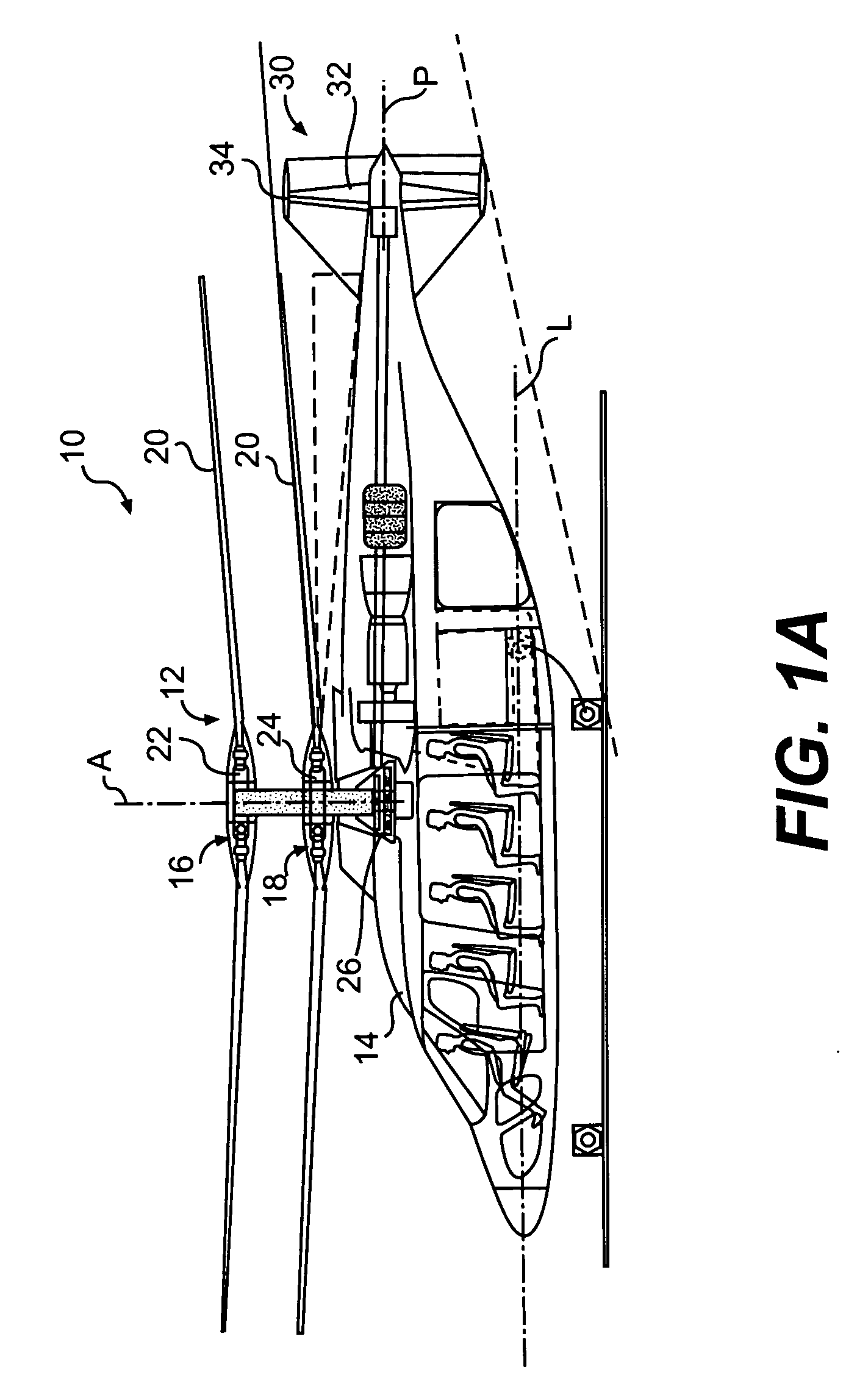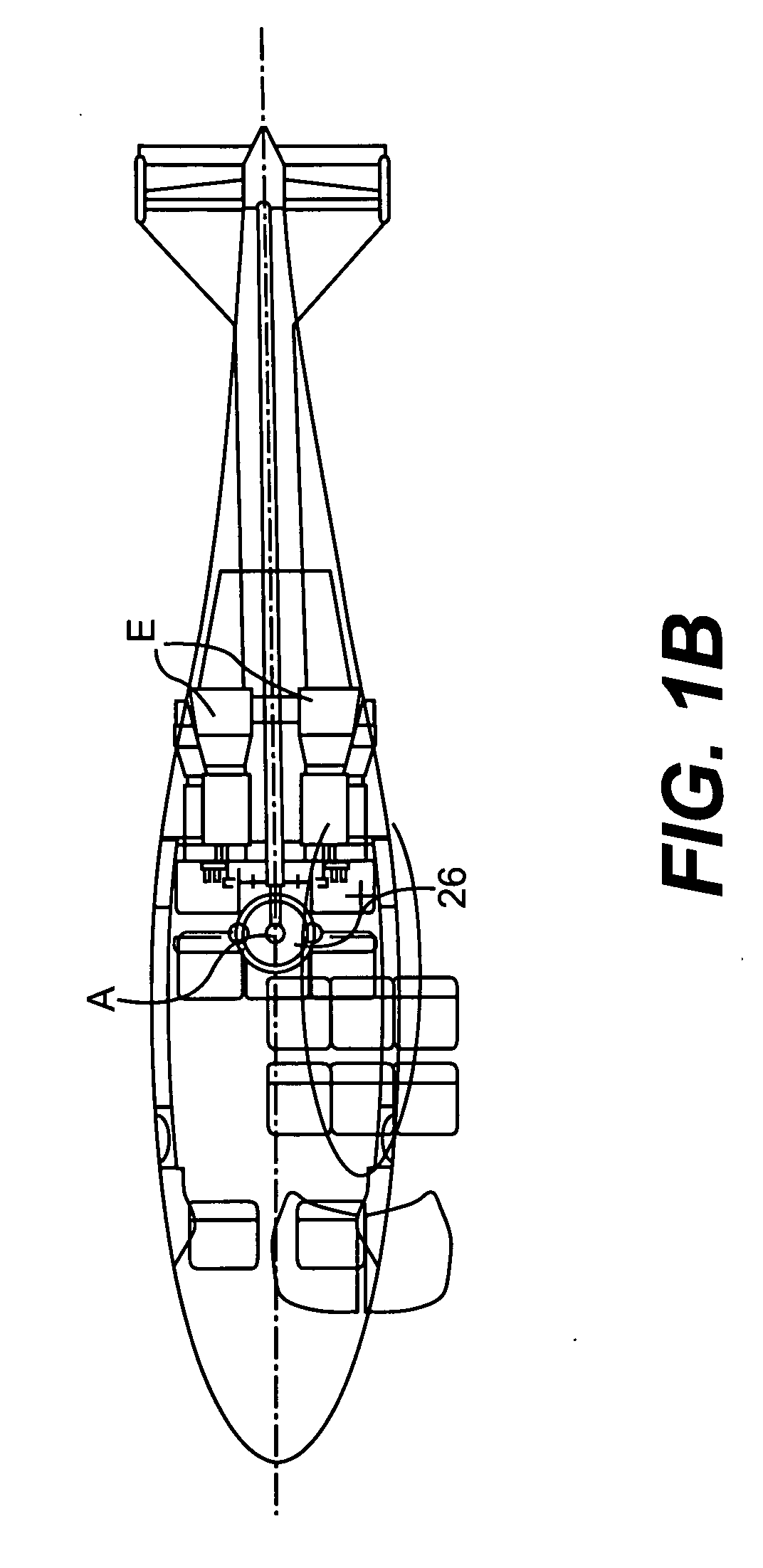Rotor drive and control system for a high speed rotary wing aircraft
a rotary wing aircraft and control system technology, applied in the field of rotary wing aircraft, can solve the problems of slow airflow velocity across the retreating blade, the tendency of the retreating blade to stall at high forward airspeed, and the limitation of the forward airspeed of the conventional rotary wing aircraft, so as to minimize the major source of vibration
- Summary
- Abstract
- Description
- Claims
- Application Information
AI Technical Summary
Benefits of technology
Problems solved by technology
Method used
Image
Examples
Embodiment Construction
[0019]FIG. 1A-1B illustrates a vertical takeoff and landing (VTOL) high speed compound or coaxial contra-rotating rigid rotor aircraft (collectively rotary-wing aircraft) 10 having a dual, contra-rotating, coaxial main rotor system 12, which rotates about a rotor axis of rotation A. The aircraft 10 includes an airframe 14 which supports the dual, contra-rotating, coaxial main rotor system 12 as well as a translational thrust system 30 which provides translational thrust generally parallel to an aircraft longitudinal axis L while the main rotor system 12 is operating in an autorotative or reverse flow state during a high-speed forward flight profile. It should be understood that other aircraft configurations will benefit from the present invention.
[0020] The main rotor system 12 includes a first rotor system 16 and a second rotor system 18 each rotor system 16, 18 includes a multiple of rotor blades 20 mounted to a rotor hub 22, 24. The main rotor system 12 is driven by a main gearb...
PUM
 Login to View More
Login to View More Abstract
Description
Claims
Application Information
 Login to View More
Login to View More - R&D
- Intellectual Property
- Life Sciences
- Materials
- Tech Scout
- Unparalleled Data Quality
- Higher Quality Content
- 60% Fewer Hallucinations
Browse by: Latest US Patents, China's latest patents, Technical Efficacy Thesaurus, Application Domain, Technology Topic, Popular Technical Reports.
© 2025 PatSnap. All rights reserved.Legal|Privacy policy|Modern Slavery Act Transparency Statement|Sitemap|About US| Contact US: help@patsnap.com



